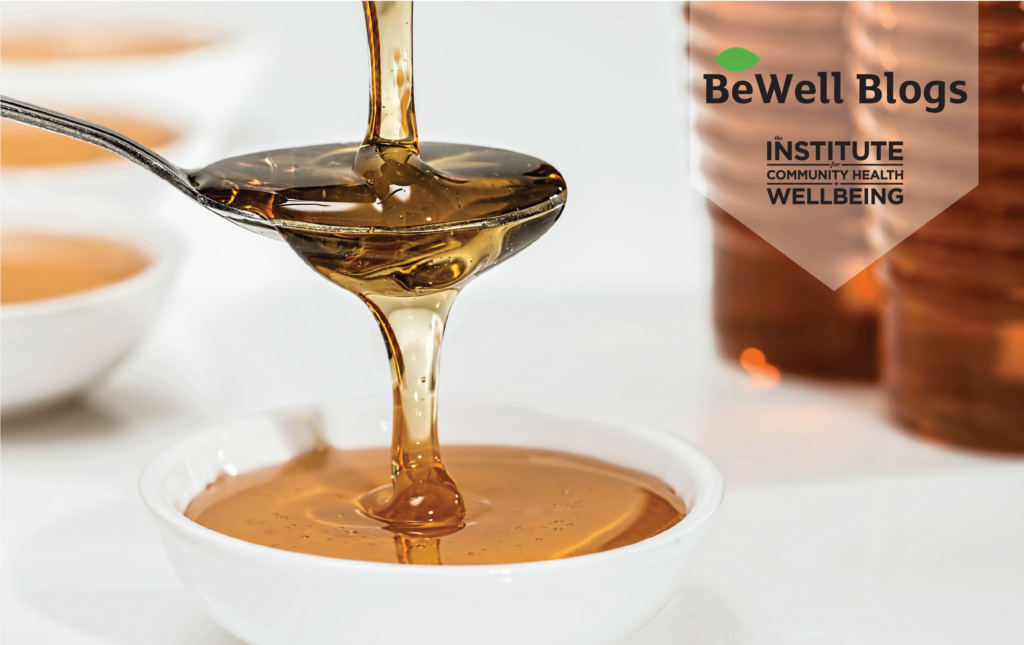
Image: pixabay // pexels.com
By: Sarah Hofstedt, CSUN Public Health Intern
What’s the difference?
The biggest difference between raw and regular honey is that raw honey has not been treated with high heat, or pasteurized. Pasteurization extends the shelf life of honey and makes it look less “cloudy,” which people may find aesthetically pleasing. Both raw and regular honey have been filtered to some degree, but raw honey has undergone less processing overall than regular honey. Raw honey is often thicker and crystallizes faster, and contains far more antioxidants than its processed counterpart.
What is raw honey good for?
Raw honey can be used in all the same ways as regular honey: as a sweetener in beverages, an ingredient in candy, or part of a skincare routine. It tends to be thicker than regular honey, and is delicious as a spread on toast or crackers. Some manufacturers add sweeteners or sugar to processed honey to increase its sweetness, but raw honey has its own unique, natural sweet flavor. Research shows that raw honey is full of polyphenols, a type of plant compound that has antioxidant properties and is linked to reduced risk of heart disease and some cancers. Antioxidants can be destroyed in the processing of honey, and raw honey can have more than four times the amount of antioxidants as regular honey. Bee pollen, which is commonly used as a supplement, is also found in small amounts in raw honey, whereas most processed honey has no bee pollen left in it.
Is raw honey for me?
If you like using honey in your cooking or skincare, switching to raw honey will provide you with all the sweetness of regular honey, and possibly a little extra benefit. You can find raw honey at most grocery stores, although buying from local beekeepers ensures you know where your honey comes from and supports the local economy. Next time you visit the farmer’s market, keep an eye out for honey vendors selling raw honey.
